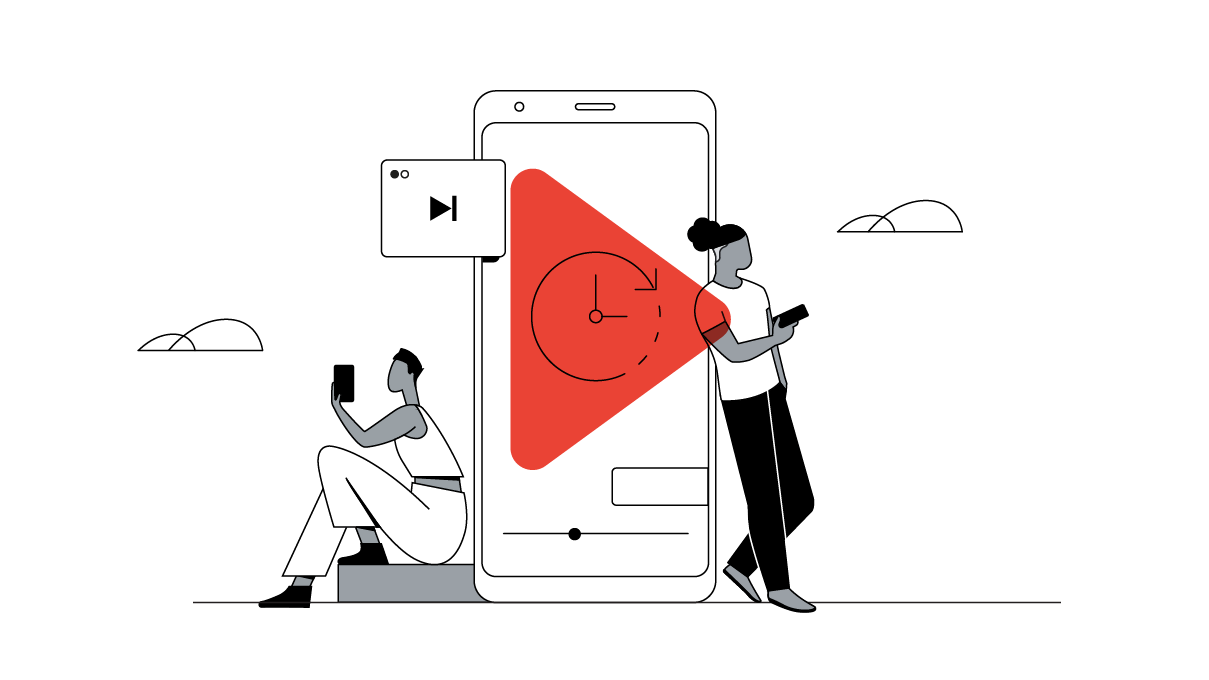Shopping bags in one hand, smartphones in the other — Malaysian consumers have become sophisticated, digital-first shoppers demanding customized online experiences. Yet many businesses fall short of providing these experiences, with less than one in five having an online presence.1 Here’s how three brands from traditional industries used YouTube to reach their most engaged audiences and turned attention into meaningful business results.
With nearly 9 in 10 connected consumers doing so via smartphones in Malaysia,2 the country is a leading mobile-first country globally. However, Malaysian businesses both large and small have been left to catch up to the digital revolution that has taken place over the last decade. Today, just 62% of Malaysian businesses have an internet connection, and only 18% have an online brand presence. Forward-thinking business owners have a major opportunity to innovate where others hesitate.
Consumers’ shift in attention to digital platforms has created new, dynamic ways for brands to engage with potential customers, yet many businesses have found digital media to be unapproachable. Going against the grain are three Malaysian businesses from traditional sectors that have embarked on a digital journey, using YouTube to reach their customers in new, meaningful ways and fulfilling each of their respective objectives along the way.
These traditional trailblazers include IPC Shopping Center, which connected with its audience in an emotional and personalized way with dynamic video ads; Giant Hypermarket, which aimed to reach its digital customers by repurposing print catalogues to drive sales on YouTube; and beauty brand Hada Labo, which engaged its most passionate audiences by optimizing the first impressions of its video ads.
Below, we’ll home in on each company’s digital approach, the learnings they gathered along the way, and the returns they saw from prioritizing their YouTube audiences.
IPC Shopping Centre drives footfall with personalized marketing
Facing fierce competition in Malaysia’s rapidly growing cohort of shopping malls, IPC Shopping Centre undertook an ambitious RM200 million redevelopment and rebranding project. To convey its new brand and shopping experience, IPC also rethought its marketing approach, using video to spark an emotional response to its revival.
IPC’s 90-second story about a boy’s first love formed the basis of 156 dynamic videos – iterations generated by YouTube’s at-scale customization tool Director Mix. The videos helped engage a large audience with diverse interests by displaying playful alternative acronyms for IPC tailored to a viewer’s search terms.
With 23 million views at a 92% video completion rate, IPC’s retailers were delighted with the results. “With more than 150 personalized videos, we were really able to cut through and captivate the audience with our new brand personality,” said Andrew Yeoh, IKEA Southeast Asia’s regional head of marketing.
Ultimately, hyper-relevant ads tailored to potential customers had a large business impact. The digital campaign helped contribute to a 39% increase in visitors to the centre compared to the previous year, exceeding the brand’s footfall targets.

Giant Hypermarket drives sales with simple, product-focused TrueView video
For 74-year-old chain Giant Hypermarket, e-commerce’s rapid growth prompted a rethinking of its newspaper-centric marketing strategy. It was time to adopt a more targeted campaign to reach the brand’s online audience.
Giant needed a straightforward solution to drive offline sales. To achieve this, it began by promoting its own brands, putting its print advertising background to use and developing a cost-effective digital campaign that targeted the existing print audience. The result was a TrueView video campaign that combined existing images from Giant’s printed catalogues with a strong call to action (CTA) to drive potential customers to the site.
“Video advertising is a spectrum,” recounted Popoy Roderos, head of marketing at Giant. “It’s all about defining what you want and finding the right solutions for your brand at any cost— what Giant wanted was performance, and we got it on YouTube."
The formula was simple: just 20 seconds, a simple price catalogue, and immediate CTA -- that was all Giant needed to reach 1.4 million unique users. These customers were, on average, 4.5X more engaged and 8X more likely to convert on Giant’s website. Overall, the campaign drove an 18% increase in brand interest and contributed to over 20% increase in retail sales.

Hada Labo builds brand awareness and an avid fanbase
Since launching in Malaysia in 2009, premium Japanese skincare line Hada Labo quickly established itself as a regional favorite in a busy market for lotions and skincare. However, it was less well-known in Malaysia.
Research found Hada Labo’s key audience — Malaysian women aged 18 to 34 — were spending more time with online video than traditional media, particularly with Korean beauty influencers. This insight inspired a bold move to run a 100% digital campaign to launch a new Hada Labo lotion family line of products, headlined by this video:
In the first four weeks, the campaign reached 1.7 million views with a 40% lower cost per view than its previous campaign, along with a 7% lift in brand awareness. Ultimately, the campaign contributed to 40% year-on-year (YoY) sales growth for the brand.

“The future of Hada Labo is in digital,” said Lim Mei Yuen, general manager at Rohto Mentholanthum Malaysia. “From this campaign, it’s clear that digital is where our audience is. YouTube is a great platform where not only can we get to know our audience through real-time data but also have an opportunity for our audience to get to know us and what we offer.”
Starting your digital journey
For businesses that have historically relied more on traditional marketing channels, the first step into digital advertising is easier than it might seem. As a matter of fact, many of the same steps needed to approach a new campaign don’t differ between digital and offline channels. The main difference is that digital advertising can be highly customized by objectives and budgets. Therefore, it’s always important to clearly define a few key areas to ensure the campaign approach is optimal:
- Define your campaign’s objectives (sales, awareness, etc.).
- Identify your target audience (e.g., by demographics or event interests).
- Evaluate the delivery options for your budget.
- Create measurable KPIs to review campaign effectiveness and optimize.
Regardless of a business’ objectives, IPC, Giant, and Hado Labo demonstrate that there’s a major opportunity to turn engaged YouTube audiences into meaningful business results. Moreover, because each of these companies come from more traditional sectors, they were able to gain an early-mover advantage, differentiate themselves from their competitors, and win over their digitally focused customers.






